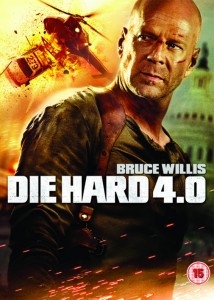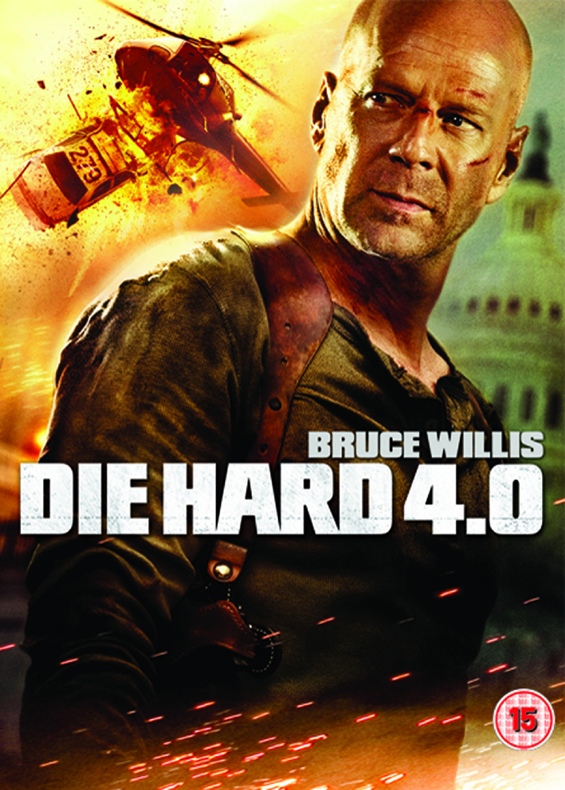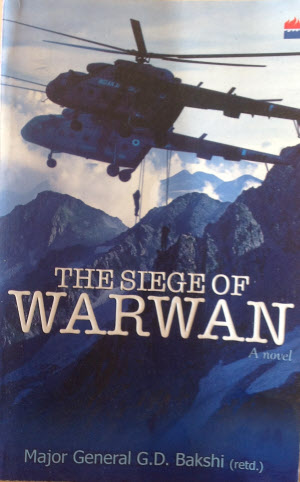by Yayaati Joshi
[box] The sequels of Die Hard, Rocky, Rambo, and other American movies work but ours don’t, opines Yayaati Joshi in his monthly column on movies, Film Freak. [/box]The American dream may be long over, but the American heroes are here to stay. Right from the Civil war to the 9/11 attacks, incidents have given enough fodder to filmmakers to churn heroes out of them. One of them, in particular, is a tad too angry, and as his wife says, on seeing a very angry and frustrated terrorist, “Only John can do that to someone”. She’s right. John McClane, who for years to come will be a part of the league of macho men, which has mesmerised audie nces not only in America, but throughout the world.
nces not only in America, but throughout the world.
If John’s short biography were to be written, it’d read something like this: cop, beer drinker, trigger-happy, short-tempered, determined to oust the criminal masterminds, and getting better with age. Compare him to the war hardened Rambo, who shares the same first name as the cop, and you have another likeable character. For another viewpoint, add the pugilist Rocky Balboa to the mix, and a veritable array of ideals, in which these heroes are rooted, comes to mind. These ideals are those that the nation of America can relate to — its heroes, with all their flaws, have kept the stars and stripes flying high, and free of any discernible wrongdoing.
The primary function of cinema is to engage with the audience — to entertain, and at times, to teach a moral lesson. Despite all his chinks in the armour, the American hero has a tendency to find a way to penetrate the masses either through his manliness, or through his impeccable character that refuses to budge in the presence of tantalising temptations. That is one major reason, why sequels of already successful films are made — a turnout of audience is guaranteed, and so is the tradition of film franchises running up to five or even six sequels of the original. (The Die Hard series is reported to be made at least twice more, because both the protagonist, Bruce Willis, and the producers think that there is enough material in McClane to entertain his followers).
Move away from Hollywood to the land where a film is supposedly incomplete without song and dance sequences, and you can hardly spot a sequel which ran successfully. The Apu Triology by noted filmmaker Satyajit Ray might be an exception, but the recent trend of successful movies being reproduced with the same name, albeit with different characters and even different setups, is hardly as successful an effort as its Hollywood counterpart. Indian filmmakers have treated the first movie as a premise for launching another one, with the characters being different, and the second movie made as a mere glimpse of the first one. Not surprisingly, box office success has eluded such films in many cases. A few examples: Murder, which was a rip-off of a Hollywood film, was ‘continued’ not in plot, but in premise, by allowing the same actor to play the lead in the second movie, which was named Murder2. The first film, which was about a wife in love with an old paramour, saw its end with the wife’s morality being restored, amidst events that included a possible murder, and treachery. The “sequel” had none of the characters of the original film — perhaps the only similarity here with Hollywood sequels was that of intent: banking on a successful idea and recreating it to reproduce the financial gains.
For a particular reason, I’ve not included science fiction sequels such as The Terminator, The Matrix or the less serious Back to the future: Indian cinema is quite antiquated as far as special effects go, and attempts to make science fiction films in India have been appalling at best. Case in point: the recently released Ra.One, which before its release promised to be one of the costliest Indian films, primarily because of money spend on special effects. The result was a badly made film, and far from thinking of a sequel, the film had its producers shaking their heads in disappointment due to its poor reception.
Whilst Hollywood can boast of sequels that have become iconic, its eastern counterpart has no cards up its sleeve to put on the table. The best shot that Indian filmmakers get for some international recognition are through indie films, which are shown to a niche audience in film festivals, and the indie filmmakers are left pining for its release in India (an example: an Indie film called ‘That Girl in Yellow Boots’). But indie films are hardly remake-able. Rich as the Indian film industry is, it is yet to produce, for its audience, a long running sequel like Die Hard; merely renaming films is a half-hearted effort, not suited to satisfy the appetite of fans who want a long running series. As this is being written, a reportedly direct sequel of an Indian film, Ab Tak Chappan (“56 So Far”—a reference to the number of criminals killed by a cop), is being made. Will its release be the path breaking moment that Bollywood needs? Time will tell.
Yayaati Joshi is a man with simple tastes and intense beliefs. Contrary to the bling associated with the capital city, he prefers the company of close friends, an engaging book or an Alfred Hitchcock movie. His placid demeanour is often mistaken for reticence; Yayaati is a self-proclaimed loner, whose recent pursuits include his foray as a budding writer. Yayaati blogs at http://rantingsofadelusionalmind.wordpress.com.
[facebook]Share[/facebook] [retweet]Tweet[/retweet]






